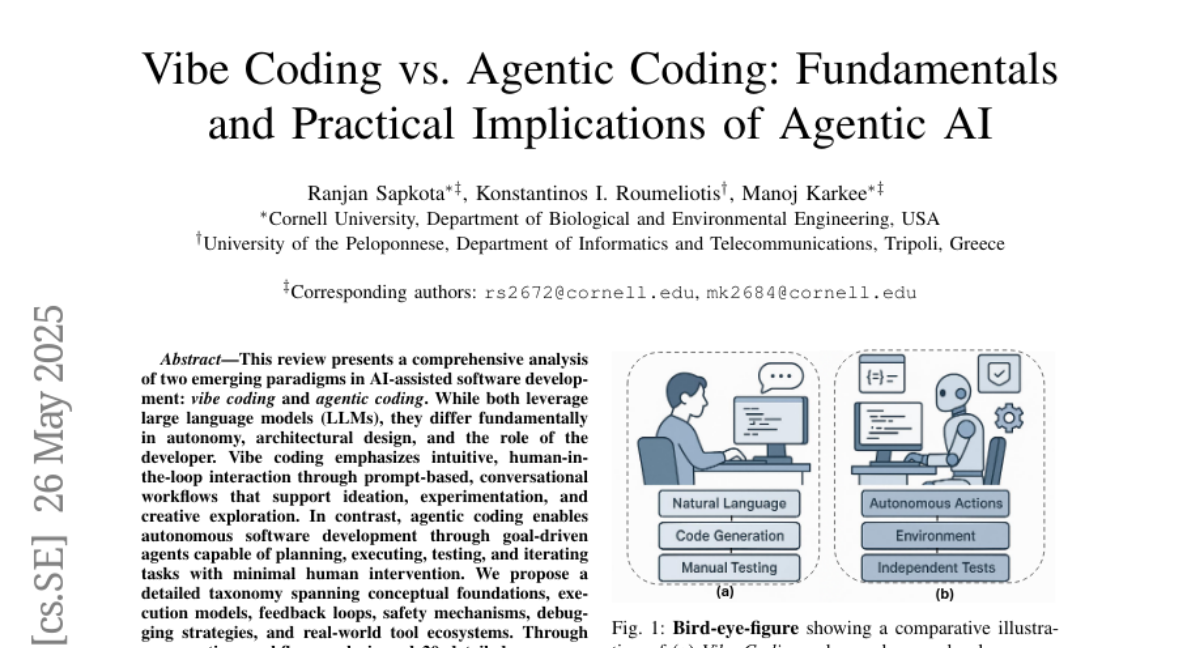Vibe Coding vs. Agentic Coding: Fundamentals and Practical Implications of Agentic AI
Ranjan Sapkota, Konstantinos I. Roumeliotis, Manoj Karkee
2025-05-27

Summary
This paper talks about two different ways that artificial intelligence can help with writing computer programs: vibe coding and agentic coding. It explains how these two methods work, how they interact with people, how much independence they have, and where each one is most useful in the world of AI-assisted software development.
What's the problem?
The problem is that as AI becomes more involved in helping people write code, there are different approaches to how this help is given, but it's not always clear which approach is better for certain situations. People need to understand the strengths and weaknesses of each method to make the best use of AI in programming.
What's the solution?
The authors review and compare vibe coding, which is more about helping and suggesting, with agentic coding, which is about the AI taking more control and making decisions on its own. By highlighting the differences in how they interact with users and how much freedom they have, the paper helps clarify when and why you might want to use one approach over the other.
Why it matters?
This is important because as AI tools become more common in programming, knowing the difference between these approaches helps developers and companies choose the right kind of AI assistance. This can lead to better teamwork between humans and AI, more efficient coding, and smarter use of technology in software projects.
Abstract
A review contrasts vibe coding and agentic coding paradigms, highlighting their differences in interaction, autonomy, and application areas in AI-assisted software development.